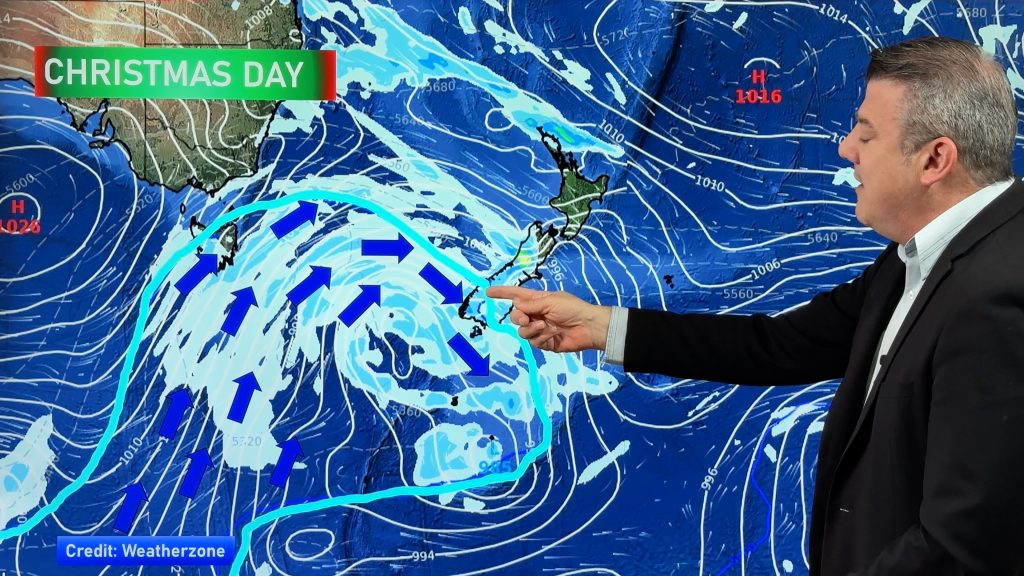Highlights of the Week – What’s been making Weather News?
11/03/2017 6:00pm

> From the WeatherWatch archives
Wow! What a topsy-turvy end to Summer/beginning of Autumn we’ve had this week – as March certainly got off to something of a flier.
We’ve seen plenty of action on both sides of the Tasman through the week, but let’s start with our neighbours across the ditch.
Starting with some dry and hot news, Sydney and Brisbane both broke their summer heat records last week, making it feel as if locals moved hundreds of kilometres north for the summer.
Sydney averaged 20.9 and 28.8 degrees for minimum and maximum temperatures this season. This compares very closely to Brisbane Airport’s average summer of 20.8 and 28.7 degrees, some 700km further north.
The summer of 2016/17 has been dubbed the ‘angry summer’ by climate scientists who’ve been investigating just how extreme things got.
They’ve found that during a 90-day period, 205 Australian weather records were broken.
Professor Will Steffen is a scientist with the Climate Council of Australia, and the lead author of the report Angry Summer 2016/17: Climate Change Supercharging Extreme Weather, released this week.
Tropical Cyclone Blanche was in the headlines on Sunday last week after forming in the Joseph-Bonaparte Gulf, bringing flooding rains and gale force winds to parts of northern Australia.
Point Fawcett at Cape Fourcroy on the western edge of the Tiwi Islands recorded 384mm of rain in just 24 hours, while heavy rain also fell for Point Stuart (78mm), Pirlangimpi (75mm) Dum In Mirrie (70mm) and Darwin (55mm).

After the Cyclone, flood watches remained in place for much of the northern and northwestern regions of Australia.
Later in the week it was the turn of Australia’s east coast to get the rough weather – as the region’s longest run of big waves since last June’s destructive ‘black nor-easter’ swell hit this week.
A barrage of big waves created dangerous surf conditions along exposed coasts in New South Wales and southeast Queensland.
Sea & swell along #NSW & southern #QLD coasts ease this weekend but strengthen for southeast #WA & #SA. https://t.co/4wmBXaYLX8 pic.twitter.com/cVCfbHRvYy
— BOM Australia (@BOM_au) March 10, 2017
And further afield, at least 110 people, most of them women and children, have died from starvation and drought-related illness in Somalia in the past week, Prime Minister Hassan Ali Khaire said Saturday.
Khaire made the announcement while speaking to the drought committee in Mogadishu, four days after President Mohamed Abdullahi Farmajo declared the drought a national disaster.
UN says more than 20M people in Yemen, South Sudan, Somalia, northeast Nigeria face death from starvation, famine. https://t.co/OUFiARotw5
— The Associated Press (@AP) March 10, 2017
And back here at home, we saw an autumn change bring much needed rain to dry parts of our country this week – though in some places it was certainly more than what was needed.
The rains fell, did their job, and then just kept coming – as what was widely misreported in some parts of the media as a “weather/rain bomb” was patches of at times sustained, heavy rain in areas simply not equipped to handle the volumes of water dumped on them!
The heavy rain in South Auckland overnight on Wednesday lead to a lucky escape for a police officer according to updates on Twitter.
WeatherWatch.co.nz twitter follower Dave Poole sent us this tweet on Wednesday afternoon following the deluge in South Auckland overnight.
Well @PhilipDuncan reports in Clevedon of 160ml plus pic.twitter.com/H09CUEVa4V
— Dave Poole (@PoolieMoaBeer) March 7, 2017
WeatherWatch.co.nz was inundated on Tuesday morning with photos of a very red sky across parts of the country, especially Auckland.
As high cloud thickens over New Zealand today the rising morning sun way out to the east lit up those clouds…briefly. In fact the window for the sun to shine through a gap in the clouds to the east of the country was short lived, but it was spectacular.
Have a look at our amazing gallery of sunrise photos, here.
Morning Red Sky over Auckland’s Maungawhau pic.twitter.com/BQC1rJevKR
— Michael Field (@MichaelFieldNZ) March 6, 2017
And finally, Aucklanders have reduced their water consumption following requests by Watercare but more savings are urgently needed. Everyone is being asked to use 20 litres less water per day.
This is because this week’s storm has restricted the treatment capacity of the city’s largest water treatment plant.
In the 24 hours to Saturday afternoon, Aucklanders collectively used 415 million litres of water. Total consumption needs to drop below 400 million litres of water per day.
Tourist Road, Clevedon, is currently closed. This is why. The water is over a metre deep. pic.twitter.com/T622GhseRJ
— Auckland CDEM (@AucklandCDEM) March 10, 2017
We’ve had plenty of readers write to or message us requesting an explanation of the current weather conditions – and the short answer is: it’s the tropics’ fault.
Check out the longer – and better – answer, here.
Don’t forget to vote in this week’s poll, below – it’s all about flies!
– Drew Chappell, WeatherWatch.co.nz
Comments
Before you add a new comment, take note this story was published on 11 Mar 2017.




Add new comment